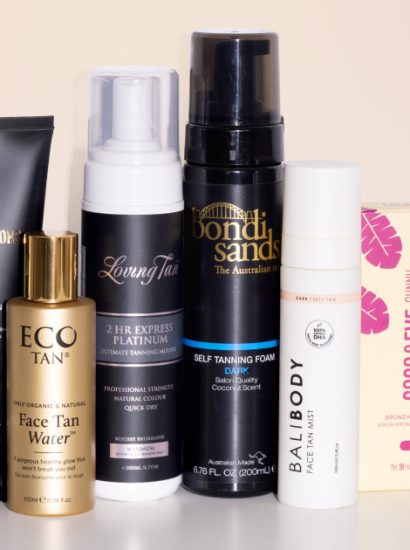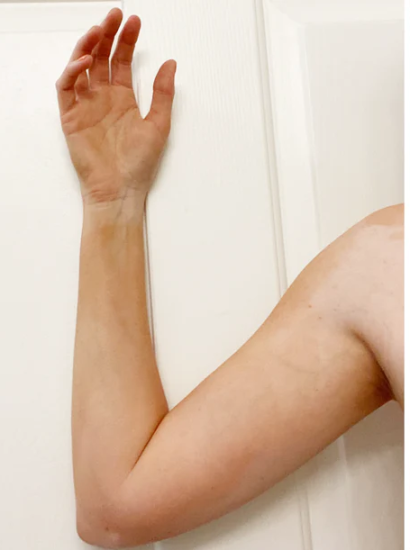Self tanner can give you that perfect sun-kissed glow — until it goes wrong. Whether your tan turned streaky, patchy, or simply too dark, you’re probably wondering how to get off self tanner without harming your skin. The key is gentle exfoliation, hydration, and using safe, skin-friendly ingredients.
In this guide, we’ll explore the most effective ways to remove self tanner without irritation or dryness. From DIY remedies to expert tips, you’ll learn exactly what to do — and what to avoid.
Understand How Self Tanner Works
Before removing it, it’s helpful to know what’s happening on your skin.
Most self tanners use an ingredient called DHA (dihydroxyacetone), which reacts with amino acids in your skin’s outer layer to create a temporary brown pigment. Because the reaction only affects dead skin cells, the color naturally fades as your skin sheds.
This means that the safest way to remove self tanner is to speed up natural exfoliation — not scrub your skin raw.
Take a Warm Bath or Shower
Warm water softens your skin and loosens the tan’s bond.
Try soaking in a warm (not hot) bath for 15–20 minutes. Add a few drops of baby oil or coconut oil — these help break down DHA and moisturize your skin simultaneously.
After soaking, use a soft washcloth or gentle exfoliating mitt to lightly buff your skin in circular motions. Avoid harsh scrubbing, which can cause redness or irritation.
Use an Exfoliating Body Scrub
A gentle exfoliator is your best friend when removing self tanner.
Opt for natural scrubs that use fine sugar, coffee, or oatmeal particles rather than harsh salt or walnut shells.
You can also make your own at home:
- 2 tablespoons of brown sugar
- 1 tablespoon of coconut oil
- 1 teaspoon of lemon juice
Apply the scrub in the shower using circular motions to lift dead skin and fade the tan evenly. Rinse thoroughly and apply moisturizer afterward.
Try a Tan Removal Mousse or Eraser
If you prefer quick results, a self-tan remover mousse is your most effective option.
These products are formulated with mild exfoliating acids like glycolic or citric acid, which help dissolve the tan without over-drying your skin.
To use:
- Apply the mousse evenly over your skin.
- Leave it on for 5–10 minutes.
- Gently remove it using a warm cloth or exfoliating mitt.
Popular options include brands like Bondi Sands Tan Eraser and St. Tropez Tan Remover Mousse.
Use Baking Soda and Lemon (with Care)
For a simple DIY option, mix baking soda with fresh lemon juice to create a gentle paste.
Apply to your tanned areas, let it sit for 5 minutes, and rinse off in the shower.
Caution: Lemon is acidic, so only use this method occasionally and never on sensitive or broken skin. Always moisturize afterward to restore balance.
Try Baby Oil or Coconut Oil Overnight
Oils are one of the safest ways to lift a self tan without harsh ingredients.
Massage baby oil, coconut oil, or olive oil into your skin before bed and leave it overnight.
By morning, your tan will loosen, making it easier to remove in the shower with a soft exfoliating mitt. This method is especially good for people with dry or sensitive skin, as it adds deep hydration.
Exfoliate with a Mitt or Loofah
A microfiber or exfoliating mitt can help remove leftover tan evenly.
After soaking or oiling your skin, gently rub the mitt in circular motions to lift excess pigment. Focus on elbows, knees, ankles, and wrists — areas where tanner tends to cling.
Avoid excessive scrubbing, which can strip your skin’s barrier. Follow with a soothing moisturizer or aloe vera gel.
Moisturize, Moisturize, Moisturize
Hydration is key to healthy skin recovery after tan removal.
Apply a rich, fragrance-free lotion or aloe vera gel right after exfoliating. This helps calm the skin, prevent dryness, and create an even tone.
If you plan to reapply self tanner, hydrated skin ensures smoother, streak-free results next time.
Use Natural Enzymes (Pineapple or Papaya)
Enzyme-based tan removers are a hidden gem.
Both pineapple and papaya contain natural enzymes (bromelain and papain) that break down proteins and exfoliate gently.
Mash a few chunks of fresh fruit into a pulp, apply to your skin for 10–15 minutes, and rinse with warm water.
Your tan will fade gradually, and your skin will feel soft and refreshed.
Prevent Future Self Tanner Mistakes
The best way to deal with bad self tan is to prevent it.
Here are a few tips to keep your next application flawless:
- Exfoliate your skin before tanning to remove dead cells.
- Apply a thin layer of moisturizer to dry areas (knees, elbows, ankles).
- Use a tanning mitt for even coverage.
- Avoid sweating, showering, or wearing tight clothes for at least 6–8 hours after application.
Regular maintenance, gentle exfoliation, and hydration keep your glow smooth and streak-free.
Conclusion
Learning how to get off self tanner without damaging your skin is all about patience and gentleness. Instead of harsh scrubbing or chemical removers, focus on hydration, mild exfoliation, and natural ingredients.
By following the steps above, you’ll safely fade your tan and restore your skin’s natural tone — ready for a fresh, flawless glow the next time you tan.
FAQs
1. How long does it take for self tanner to fade naturally?
Most self tanners fade within 5–10 days as your skin naturally exfoliates. Regular moisturizing and gentle exfoliation can help it fade evenly.
2. Can I use bleach or alcohol to remove self tanner?
No. Both bleach and alcohol can severely irritate and dry out your skin. Stick to gentle, skin-safe methods like oils, scrubs, or tan removers.
3. What’s the fastest way to get off self tanner?
The quickest method is using a tan eraser mousse followed by a warm bath and light exfoliation. It can remove most of the color in one session.
4. Can exfoliating too often damage my skin?
Yes. Over-exfoliating can strip away natural oils and cause irritation. Limit exfoliation to 2–3 times per week, and always moisturize afterward.
5. Does shaving remove self tanner?
Yes — shaving can help fade self tanner slightly since it removes the top layer of skin. However, it’s best to exfoliate before shaving to prevent patchiness.
Also read: How Long Does a Silk Press Last? Complete Guide to Smooth, Shiny Hair





